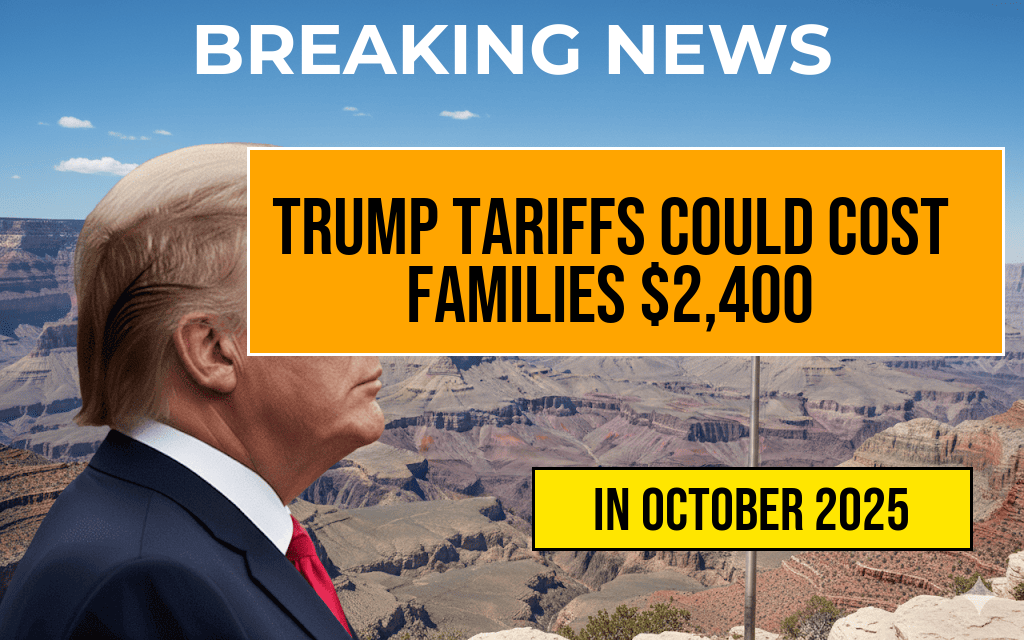Families across the United States may face an additional financial burden averaging $2,400 annually due to tariffs imposed by the Trump administration, often referred to as the “Turbulence Tax.” This term encapsulates the pervasive economic effects of tariffs on imported goods which ultimately trickle down to consumers. As the impact of these trade policies continues to unfold, an analysis reveals how these tariffs affect household budgets, particularly in sectors heavily reliant on imported products. From electronics to clothing, the ripple effects of these tariffs are being felt nationwide, raising questions about the long-term implications for American families and the economy as a whole.
Understanding the Tariffs and Their Origins
The Trump administration implemented a series of tariffs on various goods, primarily targeting imports from China, as part of a broader strategy to address trade imbalances and protect American industries. These tariffs, which can range from 10% to 25%, have particularly affected consumer goods, leading to increased prices at retail outlets.
The Financial Impact on Households
The burden of these tariffs is not shouldered by companies alone; the effect is felt directly by consumers. A recent analysis conducted by the Peterson Institute for International Economics estimated that the average American family now pays approximately $2,400 more each year due to tariffs. The breakdown of these costs is as follows:
| Product Category | Estimated Annual Cost Increase |
|---|---|
| Electronics | $600 |
| Clothing | $400 |
| Furniture | $300 |
| Appliances | $500 |
| Food Products | $600 |
The Broader Economic Context
The tariffs are part of a larger economic strategy that has drawn both support and criticism. Proponents argue that these measures protect American jobs and industries by encouraging consumers to buy domestically produced goods. However, critics contend that the increased costs of imports can lead to inflation, disproportionately affecting low- and middle-income families.
Consumer Choices and Market Reactions
In response to rising prices, consumers are adjusting their purchasing habits. Many are opting for cheaper alternatives, looking for sales, or even reducing their overall consumption. This shift can impact retailers and manufacturers who rely on consistent consumer spending. Some businesses have reported reduced sales, while others are adjusting their supply chains to mitigate the impact of tariffs.
- Price Increases on goods have led to consumer pushback, with many shopping at discount retailers.
- Shifts in Supply Chains are being observed as companies seek to source materials domestically or from countries with lower tariffs.
- Long-term Effects on the economy remain uncertain, with potential job losses in sectors reliant on imported goods.
Potential Policy Changes Ahead
As the Biden administration reassesses trade policies, there is a growing conversation about the future of these tariffs. Some economists suggest that reducing or eliminating certain tariffs could provide relief to American households and stimulate economic growth. Others caution that such moves could jeopardize the progress made in trade negotiations.
In the meantime, families are left to navigate this “Turbulence Tax,” which underscores the interconnectedness of global trade and domestic economic health. As discussions on tariffs continue, the financial well-being of American households remains a critical factor to consider in policy decisions.
For more in-depth analysis on the economic consequences of tariffs, visit the Washington Post for further insights.
Frequently Asked Questions
What are the Trump tariffs and how do they work?
The Trump tariffs refer to a series of import duties imposed by the Trump administration on various goods, aimed at protecting American industries. These tariffs increase the cost of imported products, which can lead to higher prices for consumers.
How does the ‘Turbulence Tax’ affect American families?
The ‘Turbulence Tax’ represents the estimated additional cost that American families may incur due to tariffs, with an annual burden projected at $2,400. This cost stems from increased prices on everyday goods, including electronics, clothing, and groceries.
What types of goods are primarily affected by these tariffs?
Goods affected by the Trump tariffs include a wide range of items such as household appliances, electronics, and raw materials. The tariffs target imports from various countries, impacting both foreign producers and American consumers.
Are there any potential benefits to the tariffs?
Proponents of the Trump tariffs argue that they can protect American jobs and industries by making imported goods more expensive. This could encourage consumers to buy domestically produced items, potentially boosting the U.S. economy in certain sectors.
What can families do to mitigate the impact of these tariffs?
Families can mitigate the impact of the ‘Turbulence Tax’ by being mindful of their purchases, seeking out domestic products, and comparing prices. Additionally, staying informed about changes in tariffs and shopping during sales can help reduce costs.

Leave a Reply